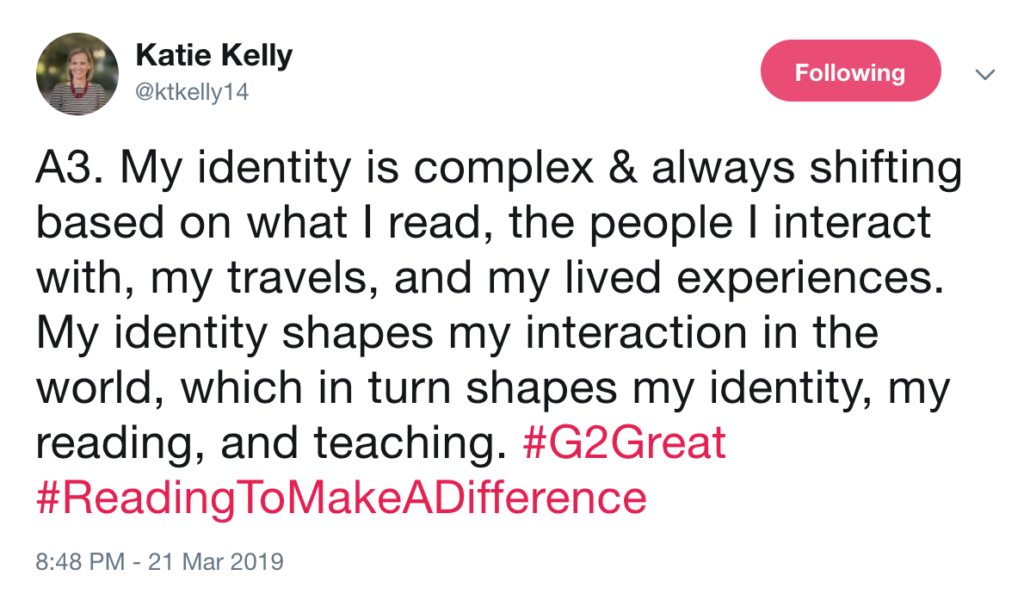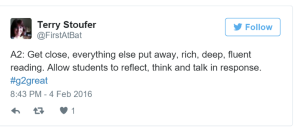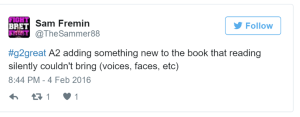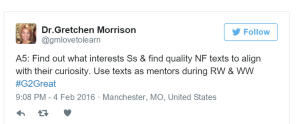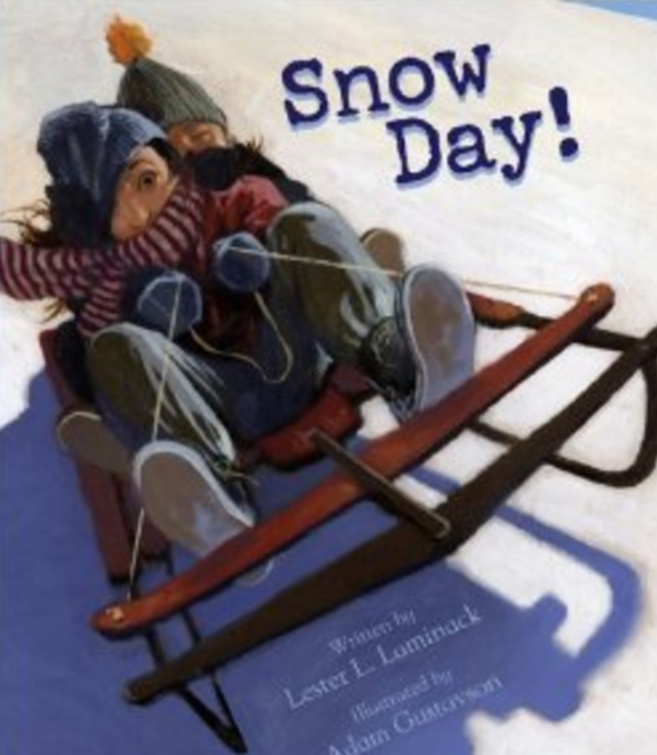By Jenn Hayhurst
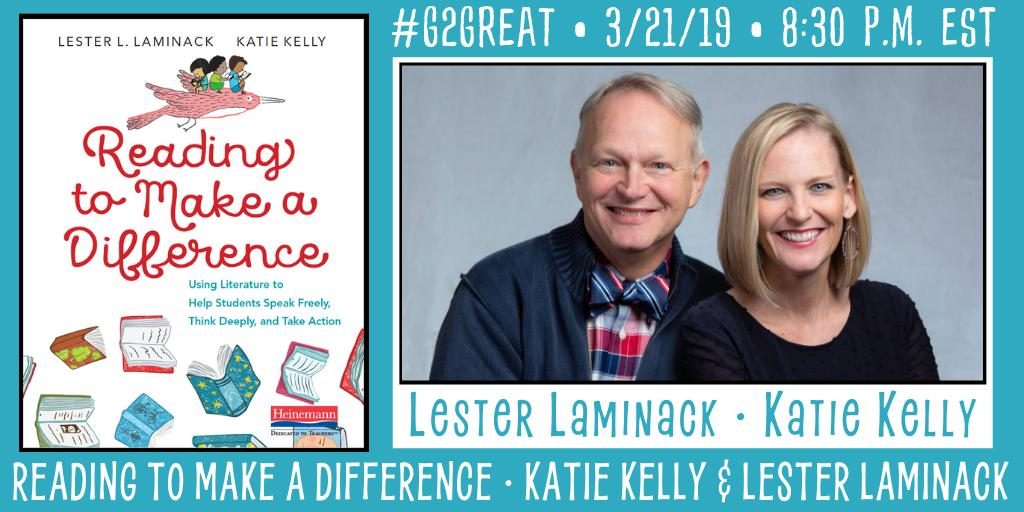
On March 21, 2019, Lester Laminack and Katie Kelly joined #G2Great to begin a conversation around their book, Reading to Make a Difference. I have to say, I just love that title, Reading to Make a Difference. There are so many ways that reading can make a difference that it boggles my mind and stirs my soul. It makes me dizzy to think about the endless potential for positive change that is possible when teachers view reading as a call to action. The chat began with meaningful reflections as teachers celebrated book choice, writing, and the sheer joy that comes with intentional learning:
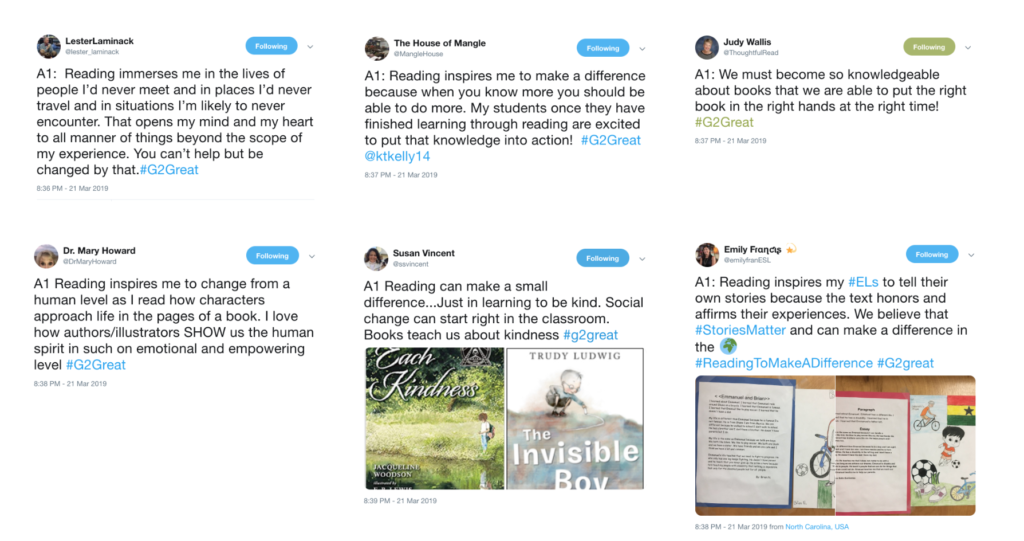
As I read these tweets I am struck by the varied perspectives and I kept thinking about how Lester and Katie’s work was inspired by Dr. Rudine Sims Bishop’s piece, Windows, Mirrors, and Sliding Glass Doors.
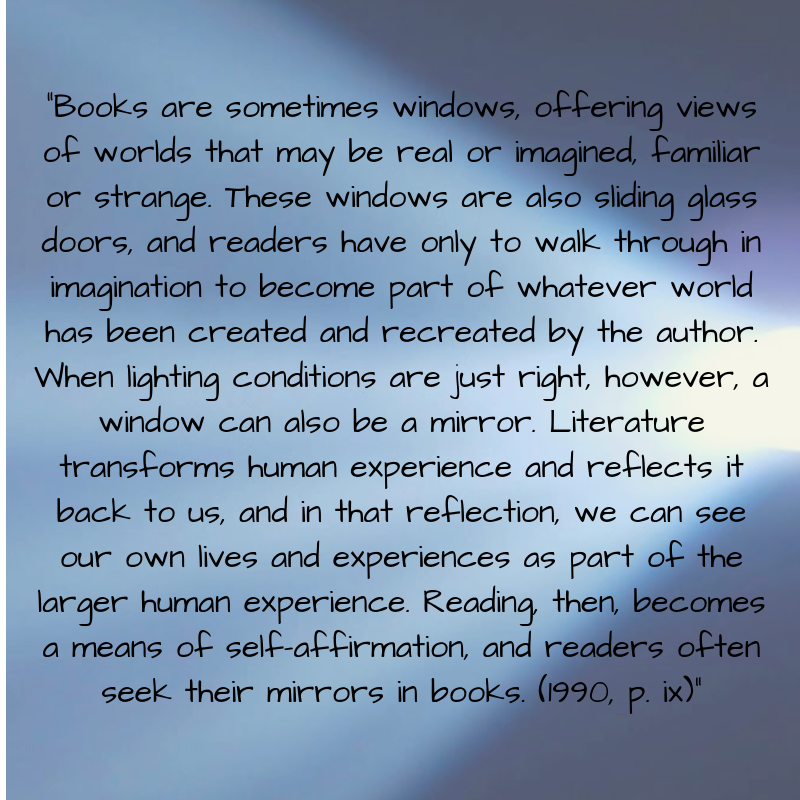
Mirrors
We look to books to help us understand ourselves and the world. Books are indeed a mirror, they reflect a reader’s own story back to them as they read to find clarity and validation. These are the important moments for readers, this process is part of forming a secure identity. As they journey down this path to self-discovery, it is only natural that they begin to question: How am I different? How am I the same? What can I learn from all of this?
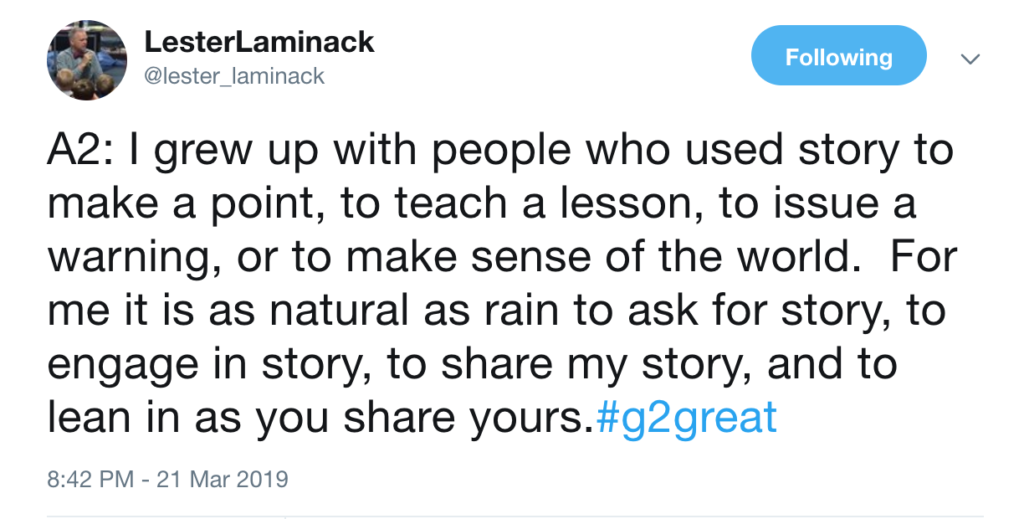
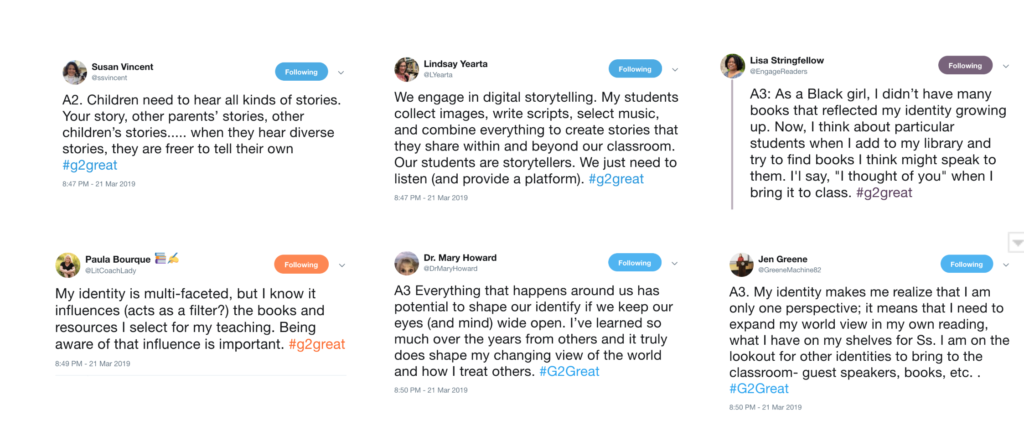
Windows
The windows we shape in our classrooms are constructed by the libraries we keep. It is time that we all ask ourselves, am I willing to take a stand for equity? Will I expand my classroom library to greet and embrace all my students? There are so many stories to tell and it is vital that we provide access to them. Children are broadening their understanding of the world as they look to find new possibilities and greater awareness for the complexities of life. Trust that the books we offer them can help with this work.
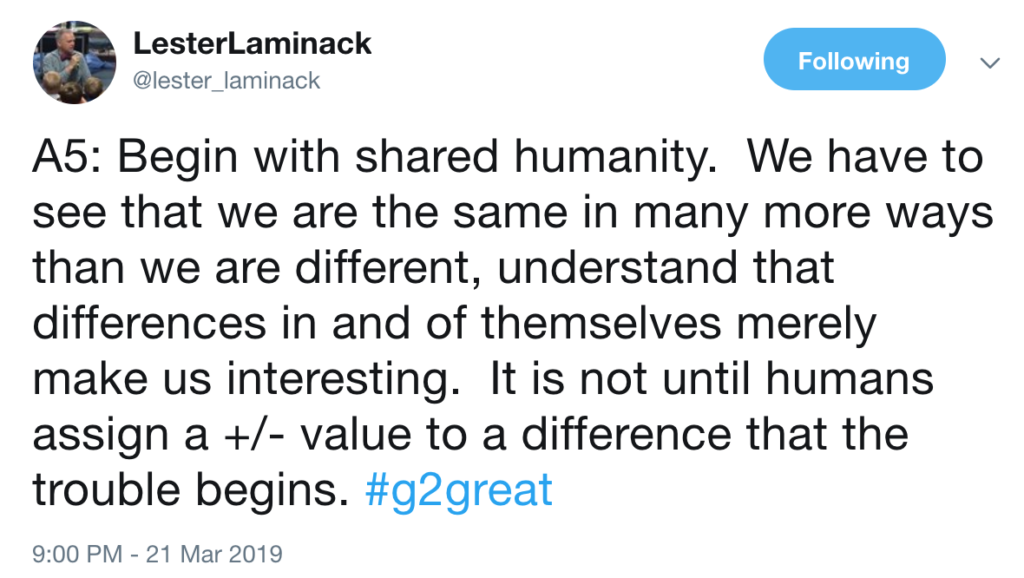
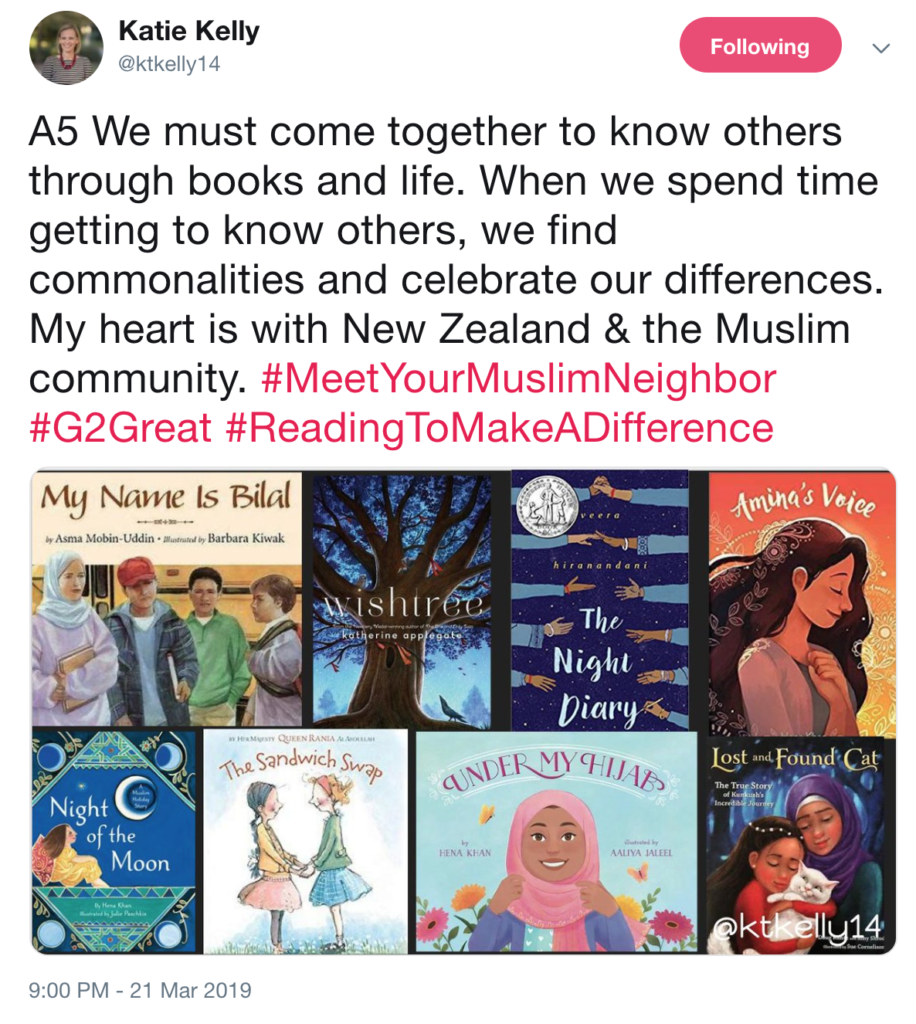
Sliding Glass Doors
Books are here to inspire us. They are foundational for opportunities to grow. They can unlock the potential for new experiences. We can teach our students to seize these opportunities through the relevant work that can come with reading a great book. What can I do with my learning? If we live the life of an authentic learner we can show them how to slide that glass door open, to step through and create something substantial
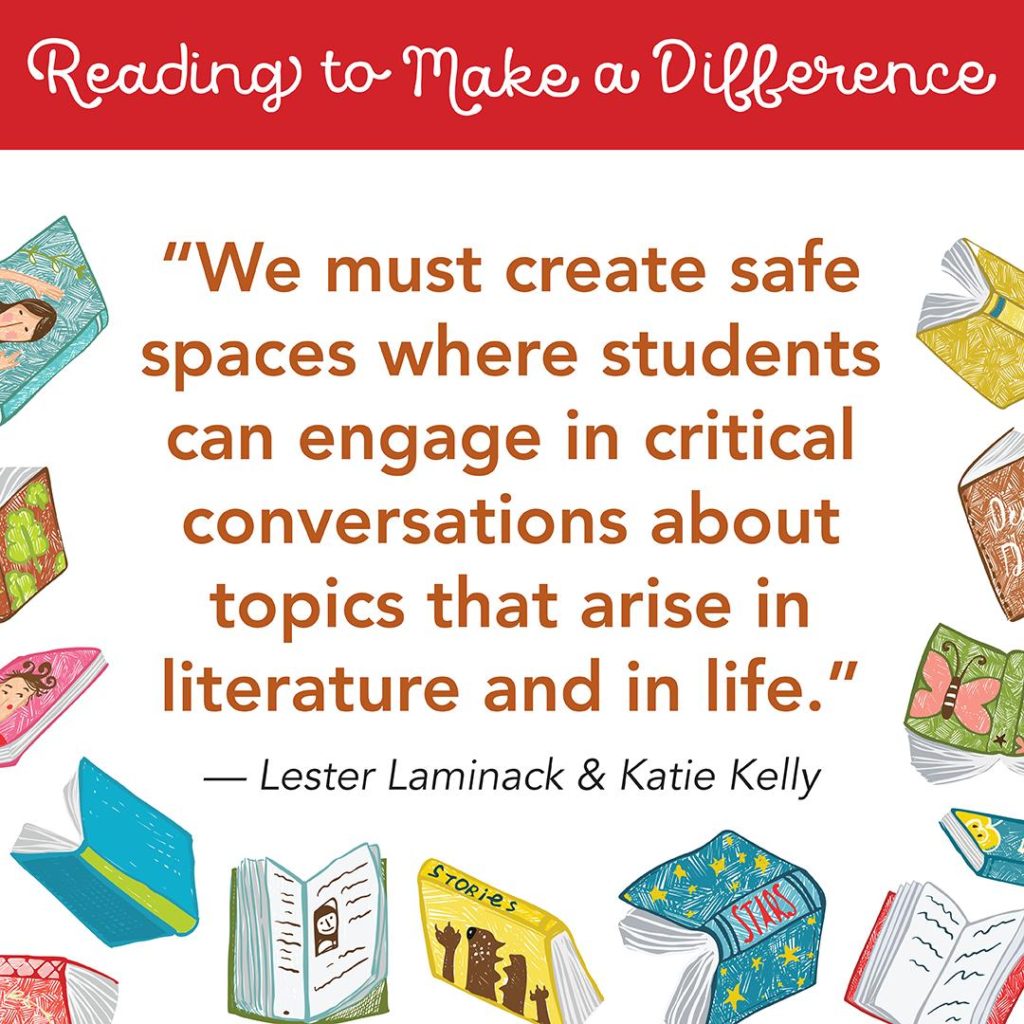
Thank you, Lester and Katie for your beautiful book. It is a great resource for teachers to read, reflect, and create. I hope you will all continue to dig deeper into this work and continue grow your practice. Here are some helpful links that can keep the learning going:
